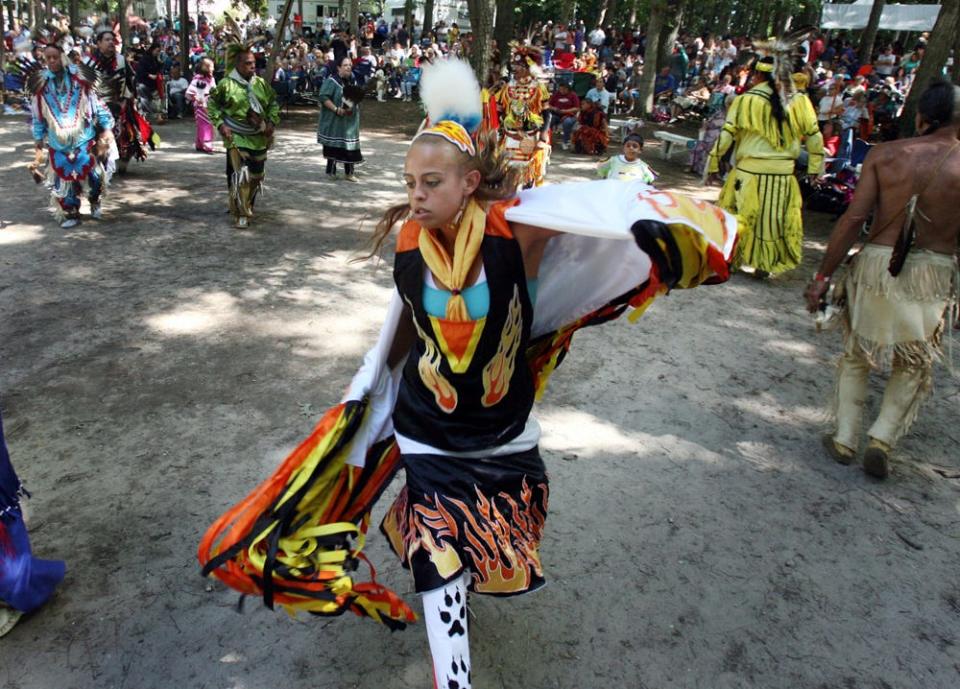Delaware history: When the treasured coast was the land of the Kuskawaroak
- Oops!Something went wrong.Please try again later.
Long before the ocean resorts were established, and the Delaware coast became a summer playground enjoyed by millions, the mainland west of the coastal bays between the south shore of the coastal bay and the Indian River Inlet teemed wit, deer, bears, birds and other wildlife. Fish, crabs and oysters abounded in the broad, shallow bay that separated the mainland from narrow line of sandy dunes that bordered the surf. Four centuries ago, this was the land of the Kuskawaroak.
Today, the Kuskawaroak are most often referred to as the “Nanticoke.” In the Sunshine 1987 edition of the Heartland of Del-Mar-Va magazine, Little Owl (Charles C. Clark IV) commented, “[The Nanticoke] name is an anglicized version of one of the many names our people have gone by over the years. It is believed that our name was once ‘Kuskawaroak ’… The meaning of Kuskawaroak is unknown, but it is possible it means ‘place of making white beads.’ "
When the Nanticoke arrived in Delaware is uncertain, but they occupied this land for many years before the coming of the European settlers in the 17th century. According to Little Owl, “Countless centuries ago, large numbers of Native Americans began a mass exodus across the country traveling in all directions. The group of people which moved eastward became known as the Algonquian Migration, as we all spoke dialects of the Algonquian language. The Nanticoke were among these people.”

The Nanticoke built permanent homes, known as wigwams or witus, out of wood and bark, with reed mats covering the floor. Some of these structures were small, domelike buildings, and others were rectangular.
In addition to their permanent villages, the Nanticoke built seasonal houses closer to the coast. During the hot summer months, they used these “vacation” homes along the Indian River and near the beach to take advantage of the cool sea breezes.
On June 2, 1608, Capt. John Smith led a small band of English colonists onto a small boat at the fledgling Jamestown colony. Crossing the Chesapeake Bay, Smith explored the rivers and streams of the Delmarva Peninsula.

After the small boat of explorers entered the Nanticoke River, Smith navigated the twists and turns of the river. On shore, the arrival of the Englishmen did not go unnoticed. Word spread among the Native Americans of the appearance of the strange craft in the Nanticoke River. The Nanticoke traded with tribes far beyond the Delmarva Peninsula; and they undoubtedly heard stories about the fair-skinned people who had been moving onto tribal lands as if it were their own.
Smith’s exploration of the Delmarva Peninsula unleashed a flood of European colonists who followed in his wake. The newly arrived settlers eventually outnumbered the Nanticoke, and some of the descendants of these colonists would one day establish the coastal towns of Ocean View, Millville and Bethany Beach.
As the Europeans flooded into southern Delaware, they pushed many of the Nanticoke off their ancestral lands, but a small group continued to live in Sussex County. In 1797, The American Universal Magazine published a letter by an unnamed writer, who described his encounter with Will Andrew, a Native American living in southern Delawar. Andrew said, “Here…stamping his foot, is the very spot where my father lived.”
LABOR DAY HISTORY: How Labor Day, born of class conflict, became last big summer hurrah at Delaware resorts
DELAWARE HUMOR: Coastal allure: Wind turbine, sandy beaches and a sitting president to boot
In 1881, the small, close-knit Nanticoke community was recognized by the state of Delaware as a legal entity. The Nanticoke Indian Museum on Route 24 near Oak Orchard opened in 1984, and the annual Nanticoke pow-wow serve as reminders of the rich heritage of the Native Americans who once owned this land.
Principal sources
Little Owl (Charles C. Clark IV), The Nanticoke, Heartland of Del-Mar-Va, Sunshine,1987, pp. 31, 34.
John Smith, The Generall Historie of Virginia, New England and The Summer Isles,Glasgow, John MacLehose and Sons, 1907, pp. 115-118.
The American Universal Magazine, July 10, 1797 quoted in Frank Morton Jones, ed.,“Description of the Cypress Swamps in Delaware and Maryland States,” DelawareHistory, March, 1949 Vol. 3 No. 3, p. 137
This article originally appeared on Salisbury Daily Times: Delaware's treasured coast was once the land of the Kuskawaroak

